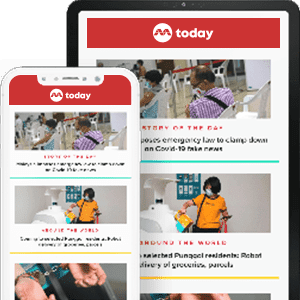Commentary: I took a sabbatical to care for my dyslexic child. It’s made me hopeful about new norms for flexible work
A few years ago, I was working from home when I overheard my daughter telling her friend: “My mum is at home, but you cannot talk to her. While she’s in her work room, she is not to be disturbed.” It broke my heart.

In 2022, Lina Chan (left) took a sabbatical from work to care for her daughter, Nicole Chee, now 12, who was diagnosed with dyslexia.

This audio is AI-generated.
Amid pressing social issues such as an ageing population and growing risks to mental well-being, Singaporeans face increasingly diverse caregiving challenges. As expectations for flexible work arrangements become the norm, says this working mum, bosses and workers need to work together to create a more supportive workplace for all.
During the peak of the Covid-19 pandemic a few years ago, I was working from home when I overheard my daughter telling her friend: “My mum is at home, but you cannot talk to her. While she’s in her work room, she is not to be disturbed.”
It broke my heart.
I’d believed working from home would help my daughter manage her dyslexia, only to realise in this moment that I was “there but not there” — physically proximate, but not truly present in her life.
Nicole was diagnosed with dyslexia in 2021, at the age of nine. The diagnosis gave us much-needed clarity, but she still struggled in school, academically as well as socially and emotionally.
As a parent, I tried many strategies. I came home early. I blocked out afternoons to work later at night. I even engaged tutors to support Nicole’s learning needs.
Nothing worked.
My husband and I knew our child deserved everything we could give to help her be her best. But whenever we saw Nicole struggling, how she was not being herself, we felt helpless and frustrated.
We talked through a thousand and one possibilities, but eventually realised that we needed to do something radically different now. For her crucial formative years, we needed to shift our priorities to do as much as we could to support her.
One of us had to be a full-time parent.
So in 2022, I put up my hand.
FROM WORKING MUM TO FULL-TIME MOTHERHOOD
Sabbaticals are not a new concept, but many still view them negatively as signs of weakness or burnout.
As a woman who’s spent years climbing the ranks to reach management level, I also wondered if my own social and professional circles would accept my decision. I was the only person I knew taking a sabbatical to become a full-time mum.
Thankfully, my line manager and teammates were supportive of my request. They said: “If you need it, go.”
This was the push I needed.
During my sabbatical, I told Nicole that my job for those three months was to shadow her. To just be beside her, not to run her life or change it.
For neurodiverse individuals, one of the key concerns is developing confidence in themselves and their abilities. I thought hard on this: How do I give my daughter that confidence in herself?

I took time to read up on neurodiversity, and was surprised to find that dyslexia is almost as common as myopia. Many dyslexic people have made their mark on the world, including legendary filmmaker Steven Spielberg, who’s said his difficulties with reading in school pushed him to develop his storytelling abilities through visual mediums.
People also tend to overlook that while children with dyslexia struggle with traditional learning routes, they’ve been found to be gifted in other areas.
While Nicole struggles with handwriting a 200-word composition on paper due to the extra effort required to spell things out letter by letter, she expresses herself beautifully on a laptop. Within the short span of a week, she wrote an original 12-chapter story!
During these three months, my husband and I also noticed that when we heard a tune, Nicole could recall the title and artiste in seconds, even if it was a song she hadn’t heard in a long time.
We encouraged her to follow her passion for music, and she took up music mixing, even pairing up with a professional DJ to learn more. I take her to music mixing classes every school holiday, and have even bought her a DJ set. She continues to love every moment!

‘A-HA’ MOMENT
Initially, taking a sabbatical to be a full-time mum had seemed unthinkable. But my sabbatical allowed me to better understand my daughter’s perspective and connect with her on a deeper level.
I learnt things about her that I’d never noticed as a full-time working professional. For instance, as an only child, getting to spend any time with friends really excited her, even if it was on something as mundane as a quick trip to the provision shop.
For three whole months, I was able to truly and wholly focus on what being a parent can and should mean.
In a short period of time, Nicole made leaps and bounds not just as a student, but as an individual.
I’m heartened to see her self-confidence continue to grow, especially as she prepares for her Primary School Leaving Examination this year. For instance, she’s been taking greater ownership of her study schedule, and her Science grades have also improved by two bands.
To this day, Nicole still brings up shared memories from my sabbatical that mean so much to her.
It was an “a-ha” moment for me, being able to clearly see the full impact that we as parents can have on our children simply by being physically present to provide mental and emotional support.
THE COLLABORATIVE EFFORT OF WORKPLACE FLEXIBILITY
Amid pressing social issues such as an ageing population, growing risks to mental well-being, and widespread calls for a more inclusive society, the working-age generation faces increasingly diverse caregiving responsibilities.
From neurodiverse children like Nicole to ageing parents who require assistance with daily activities, or even family members with physical or mental illness, different and dynamic types of care are needed to enable everyone to thrive. That’s not to mention the oft-overlooked aspect of caregiver fatigue.

In April, the Ministry of Manpower announced that Singapore firms will be required to formalise systems for flexible work arrangement requests from this December.
As expectations for flexible work arrangements become the norm, it will require a collaborative effort from both employers and employees to discuss the types of arrangements that work best for everyone to create a more supportive workplace for all.
My own sabbatical couldn’t have happened without workplace support. My team’s regular check-ins and updates during those three months enabled me to hit the ground running upon my return to the office.
Even after my sabbatical, my company’s flexible-working policy allowing work from home or different working hours allowed me to continue juggling both my professional and personal responsibilities.
I hope more employers will consider expanding their current policies to offer employees more flexibility, like I was lucky to have when my daughter needed me most.
Employees also have a role to play in shifting traditional mindsets. If you’re facing similar circumstances, I hope my story inspires you to take action in any way you can.
Today, I advocate for people with dyslexia however I can. For instance, I’m part of HSBC’s Ability Employee Resource Group which brings like-minded staff together to support colleagues with disabilities, including physical, cognitive, neurodiversity, long-term health and mental health.
I’m also seeking ways to change negative social perceptions of dyslexia to help people see how it can be a gift. Already, more and more people are recognising this unique strength and have even coined a term for it: “dyslexic thinking”.
Inclusivity at the workplace can be so much simpler than we think— all it takes is for everyone to be a little more empathetic and take some time to reflect and change the way we work and achieve our shared goals.
ABOUT THE AUTHOR:
Lina Chan is the head of wealth and personal banking operations at HSBC Singapore.








